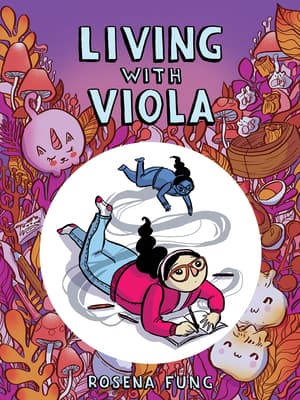
Book Review Summary: Living With Viola
Introduction
"Living With Viola" is a graphic novel written by Rosena Fung, a debut author from Toronto, Canada. The book explores mental health, cultural differences, and the challenges of middle school through the eyes of Livy, a Chinese-Canadian girl struggling with anxiety. Fung draws on her own experiences to craft a personal and relatable story that resonates with readers. In this article, we will delve into the book's themes, analyze reader opinions, and discuss the reasons why readers recommend and do not recommend "Living With Viola."
About Rosena Fung
Rosena Fung is a talented cartoonist and illustrator who has created the graphic novel "Living With Viola." With her second graphic novel set to release in May 2024, Fung has already made a name for herself in the industry. Her illustration clients include Chickadee Magazine, The Bentway, The Globe and Mail, CBC Arts, and the Toronto Transit Commission. Fung's passion for illustration extends beyond her professional work, as she enjoys teaching illustration, attending zine fairs, and indulging in her love for playing both acoustic and electric guitar. Her dedication to her craft and her ability to create relatable characters make her a promising new voice in the world of graphic novels.
Analysis of Views
-
Relatability: Many readers found "Living With Viola" relatable, especially those who have experienced anxiety or know someone who has. The portrayal of Livy's struggles with anxiety and the representation of mental health issues resonated with readers who appreciated its authenticity.
-
Cultural Representation: The book's exploration of Livy's Chinese-Canadian identity and her experiences navigating cultural differences received positive feedback. Readers appreciated the inclusion of Cantonese words and the depiction of Chinese food, which added depth to the story and made it more relatable for readers with similar backgrounds.
-
Illustrations: The illustrations in "Living With Viola" were praised for their accessibility and engaging style. Readers found the artwork to be cute and easy to follow, which enhanced their reading experience. The illustrations also added emotional depth to the story and helped readers connect with Livy's struggles.
-
Themes: Readers appreciated the book's exploration of themes such as identity, anxiety, family expectations, and friendship. The portrayal of Livy's anxiety as a personified character named Viola was particularly effective in conveying the intensity and pervasiveness of her inner thoughts. The book's emphasis on seeking help and learning to cope with anxiety resonated with readers who have experienced similar challenges.
-
Inspirational Message: Some readers found "Living With Viola" to be a source of inspiration and hope for those struggling with anxiety or mental health issues. The book's message of seeking help and learning to live with anxiety rather than trying to cure it was seen as empowering and encouraging. The portrayal of Livy's journey towards self-acceptance and understanding was seen as uplifting and relatable.
Reasons for Recommendation
-
Authenticity: Readers appreciated the book's authentic portrayal of mental health issues and the challenges faced by Livy as a Chinese-Canadian girl navigating cultural differences. The inclusion of Cantonese words and references to Chinese food added depth to the story and made it more relatable for readers from similar backgrounds.
-
Engaging Illustrations: The illustrations in "Living With Viola" were praised for their accessibility and engaging style. Readers found the artwork to be cute and easy to follow, which enhanced their reading experience. The illustrations added emotional depth to the story and helped readers connect with Livy's struggles.
-
Empowering Message: The book's message of seeking help and learning to live with anxiety resonated with readers who have experienced similar challenges. The portrayal of Livy's journey towards self-acceptance and understanding was seen as uplifting and relatable, providing hope for those struggling with mental health issues.
Reasons for Not Recommendation
-
Slow Pacing: Some readers felt that the book's pacing was slow and that it took longer than necessary to develop the story organically. They felt that certain aspects of the story were stretched out over an entire school year, which made the book feel dull at times. However, it is worth noting that this criticism was not universally shared among readers.
-
Limited Information on Managing Anxiety: A few readers felt that the book could have provided more practical strategies for managing anxiety beyond seeking professional help. They wished for more information on breathing exercises, mindfulness techniques, or other practical tools that could help readers cope with anxiety in their daily lives. However, it should be noted that this critique was not shared by all readers, and some appreciated the focus on seeking professional help as a starting point for managing anxiety.
Conclusion
"Living With Viola" is a powerful graphic novel that explores mental health issues, cultural differences, and the challenges faced by middle school students. Rosena Fung's debut novel has resonated with readers who appreciate its authentic portrayal of anxiety and its exploration of themes such as identity, family expectations, and friendship. The book's engaging illustrations add emotional depth to the story, while its empowering message of seeking help and learning to live with anxiety has inspired many readers who have experienced similar struggles. While some readers found the pacing slow and wished for more practical strategies for managing anxiety, overall "Living With Viola" is a highly recommended read for anyone looking for a relatable and inspiring graphic novel about mental health issues.